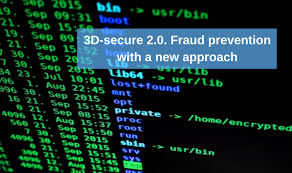In the era of increased digital transactions, tokenization and 3D Secure have become essential when it comes to sensitive personal or financial information. With the help of tokenization, this process would help in replacing sensitive data with unique tokens. On the other hand, 3D Secure adds an extra authentication step by prompting users to input a one-time code or password, fortifying the verification process, which fortifies the verification process.
Let’s dive deeper and understand the role of tokenization and 3D Secure in fraud prevention and how it helps consumers with online transactions.
What is Tokenization in Fraud Prevention?
In recent years, the increase in cybercrimes during online transactions or fraudulent activities such as fraud cases oncredit cards has been seen increasing with time. With much-advanced technology and an increase in online transactions, have become easier for hackers, where sensitive information could be accessed. Implementing tokenization has helped quite a lot by protecting a customer’s or a merchant’s sensitive information, such as financial information or card details. The process is simple, where a unique token is created. These tokens are random strings of characters which are also created randomly.
Using tokenization, it enhances secure transactions by ensuring all the sensitive information is not stored or recorded in its original form, thus making it quite hard for hackers to exploit the data or even access it.
What is 3D Secure in Fraud Prevention?
3D Secure is an additional layer of authentication designed to verify the identity of the cardholder during online transactions. This process involved a further step, such as entering a one-time password (OTP) received via SMS or using biometric authentication. In other words, the cardholder must provide additional information or undergo an authentication process. 3D Secure acts as a solution to fraud prevention for merchants and consumers from online fraudulent transactions.
What is the Role of Tokenization and 3D Secure in Fraud Prevention?
As we have understood what tokenization and 3D Secureare when it comes to fraud prevention, let us proceed to the next section and see how tokenization and 3D Secure help in advanced fraud prevention.
1. Protects Your Data Protection:
Having tokenization can prevent cybercriminals from accessing sensitive information and data even if the hackers hack the system during online transactions. Having tokenization minimizes the chances of data breaches and reduces the incentive for attackers.
2. Verifies Transactions:
One of the best perks of implementing a 3D Secure for your online transactions is an ach system. This minimizes the potential impact of data breaches and reduces the incentive for attackers. 3D Secure would make it significantly harder for fraudsters to use stolen personal or financial information for unauthorized purchases.
3. Reduces the Risk of Fraudulent Activities:
Another best perk of having 3D Secure and tokenization for merchants and consumers is that it reduces the success rate of fraudulent transactions. If the attacker obtains tokenized data, they would still need to bypass the 3D Secure authentication, making their efforts more challenging and time-consuming. Due to this reason, having both 3D Secure and tokenization can reduce fraudulent transactions and protect your sensitive data.
4. Improves Customer Confidence
Implementing these security measures would boost customer trust, assuring them that their sensitive information is well-protected and that transactions are made safe and secure. At the same time, merchants benefit from customer experiences, such as added security for customers, reduced chargebacks, and adopting standard measures that meet for secure global transactions.
Conclusion
In conclusion, tokenization and 3D Secure work together best, which secures sensitive data, rendering it useless to hackers, while adding an authentication layer, ensuring that only authorized users can complete transactions. Thus, tokenization and 3D Secure reduce the chance of unauthorized access and fraudulent activities, instilling confidence in consumers and businesses.
Reference Links:

